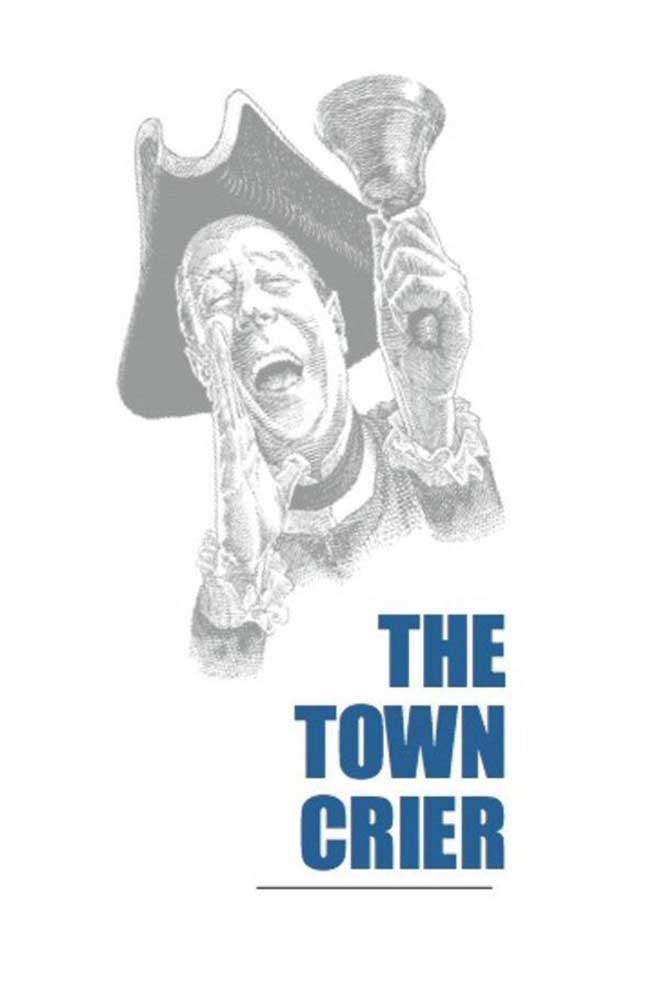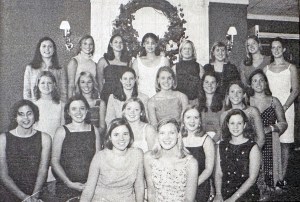The Town Crier: DLT forever (part two)
Published 8:00 am Sunday, February 25, 2024

- The Town Crier
With the help from a newspaper article from 1966, the Town Crier looked at the origins and growth of the Dalton Little Theatre’s legacy up through World War II.
The current, or “modern,” Dalton Little Theatre was formed in 1955. It has a Board of Directors and a chairperson of the board.
Trending
The formation in 1955 had an assist from the Dalton Junior Women’s Club. In the early years the once and current nonprofit ran in the black without selling ads in the programs and was even able to donate proceeds from shows to various charities in the area like Cheerhaven, which received $200 from the production of ‘The Hasty Heart.” Cheerhaven was a school for special needs individuals before they were integrated into the schools.
Then, with the production of “The Gazebo,” the Cherokee Boys Estate (as it was called at the time) received a $300 donation from the “profits.” It’s rare in any community that a nonprofit makes enough to donate to other nonprofits. That’s a sign of success as well as having your heart in the right place … you know, on your wallet.
Bitten by the “showbiz” bug
At that time the DLT didn’t have its own building but would put plays on in existing theaters like the one at the old Emery School, then being the Dalton Junior High, and the old Thornton Building Theater which used to be on the campus of Dalton High when it was downtown. I don’t know if there was a rental paid for locations used, but for the Dalton Junior High theater they donated $600 for new lighting that benefited them as well as the kids that played that stage, myself being one. Since I was bitten by the “showbiz” bug as a kid, and there were no movies to be involved with, the theater was the closest thing, having many of the components of filmmaking such as scripts, actors, makeup, lighting, sets and sound, among others.
The plays in the “borrowed theater” period were paid for by ticket sales and membership dues. By 1966 the theater group had never had a fund drive. They had props, costumes, set pieces like furniture and labor to build the sets all donated.
Tickets in 1966 were $1 in advance and $1.25 at the door. They’re a little more expensive these days but still a great bargain for your entertainment dollar. I would mention the concessions at DLT are way less costly than those at the movie theaters. You can actually pay an affordable price for a candy bar at the Little Theatre and eat it, as opposed to buying one at the movie theater and paying so much for it you put it in your safety deposit box as a retirement investment.
Trending
”Amateur night in Dixie”
The first play under the newly established DLT in 1955 was “Arsenic and Old Lace,” and for that first show they brought in a director who was a paid ringer from the Chattanooga Little Theatre, Ted Kehoe. After that, it’s been “amateur night in Dixie” ever since, with volunteer directors from the community frequently doing just as good a job as professionals elsewhere, including Broadway. Apart from using veteran directors, DLT gives first-time directors a chance at swinging for the footlights as well.
As for community outreach beyond donating to charities, the DLT sponsored at the time the Drama Club at DHS, sponsored a drama workshop for high-schoolers and older, and a had a traveling “reading” show that played to more than 14 places, performing an adaptation from Mark Twain’s “Adam and Eve.” The show was performed by Jeanne Burr and Jim Howell. The DLT also worked with the Valley Point High School Drama Club and the Dalton Junior Women’s Club. Shows during that period included “The Man Who Came To Dinner,” “The Caine Mutiny” and “Dial M For Murder.”
The 1970s was when I first got involved with the Little Theatre. I was a kid but interested in “the biz.” The Little Theatre is always looking for volunteers, because that’s how it operates, but they also always need volunteers, because that’s how they operate.
I first helped with building a set for “The Women” in the old Thornton Building Theater that the DLT would share with Dalton High. “The Women” is a play from 1936 made into a film a few years later. It’s an all-female cast with 33 parts; quite a cast for a non-musical.
The play had a Broadway revival in the early ’70s and that may have been what inspired DLT to put it on. You can imagine the actresses needed for this from a small town, and you can imagine the fun they had.
Helping with the show, I first learned about “flats,” the wall sections that are wooden frames with canvas covering it, painted to look like a wall on one side. When in place and lit, they can look as substantial as a castle wall, but are light enough for a kid to carry around (and frequently bump into actresses while moving it).
Another play I saw in the same theater was “Stalag 17.” This is a World War II play about a prisoner of war camp in Europe and the comedic and chilling aspects of that situation. The play is from 1951 and was written from true-life POW experiences in the war. It was made into a successful movie, but the movie had to be toned down a bit. This was an all-male cast and was the flip side of “The Women” coin. As a kid just starting out watching grown-ups in the theater I was mesmerized by the transformation of local men and women into characters so very different from their “real” selves, although most did retain a Southern accent.
Social aspects
It’s important to note the social aspects of the Little Theatre experience. It’s a group of like-minded folks, getting together with a goal they are all focusing on. With hard work and practice they achieve the goal and receive recognition for it. Applause is definitely a feel-good drug with no side effects, although it can be addictive.
And after a job well done, there is the after party or, more properly, the “wrap party,” which is the party after everything is wrapped up. Since everyone is invited to celebrate, I was allowed to go with another one or two of my young buddies that were helping with the plays at that time. It was a glimpse at the “grown-up” world. It turns out they could be just as goofy as kids when giddy with a good run of a show. I enjoyed watching the grown-ups have fun on almost a playground level, and I also of course enjoyed the snacks.
In 1981 the Creative Arts Guild moved to its new building on Waugh Street, freeing up the Old Firehouse for the Dalton Little Theatre to take over and finally have a home of its own. The Old Firehouse has seen numerous plays put on, including revivals of plays that had been done a generation before, in some cases with actors playing parts that were the parents (in the play) of the parts they played when young.
In addition to the regular stages where plays were put on, DLT has done dinner theaters and even performed in places like Prater’s Mill, with productions such as “The Fantasticks.” The theater, although somewhat small, has utilized the size to be an intimate theater for productions, everything from small dramas like “Separate Tables” to comedy musicals based on monsters to Broadway shows like “Pippin,” “Evita” and “Carousel.”
One of the ongoing legacies with the Dalton Little Theatre is the production of original plays, dating all the way back to the 1910s with “Cohutta,” a musical written by Daltonian Gertrude Manly Jones. Dalton filmmaker Allen Posten tried his hand with “The Big Game of Life” and then with his buddy produced “Cannibals,” which went on to become a film titled “Island Girl.”
For several years, World Carpet, headed up by the Shaheen family, sponsored a new play project, bringing in an original play that had been chosen from entered scripts. The winning script was then produced here and the playwright was brought in for the premiere. The winning “The Miracle Play” was such a hit that it then moved to Atlanta for a run.
And most recently, just weeks ago, a new musical play called “Click” was premiered here written by locals. The book (as the script part is called in a musical) was written by Ellis Stephens and the music and lyrics by Lilli Sharp, both still in high school!
The Dalton Little Theatre, along with ACT, the Artistic Civic Theatre, continue the Dalton tradition of live theater. Generation after generation here have worked to put on the best in local little theater and it’s a legacy always worth celebrating and participating in. As Dalton has said for decades and decades, spanning three different centuries: The show will go on!
Mark Hannah, a Dalton native, works in video and film production.





